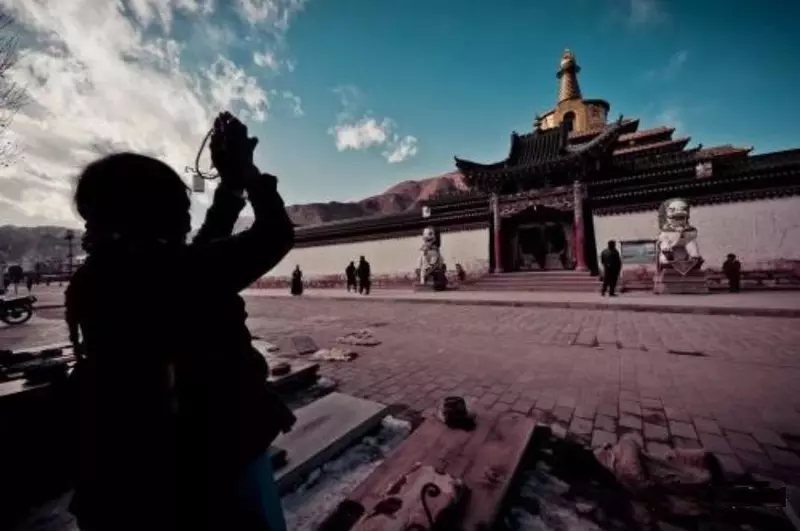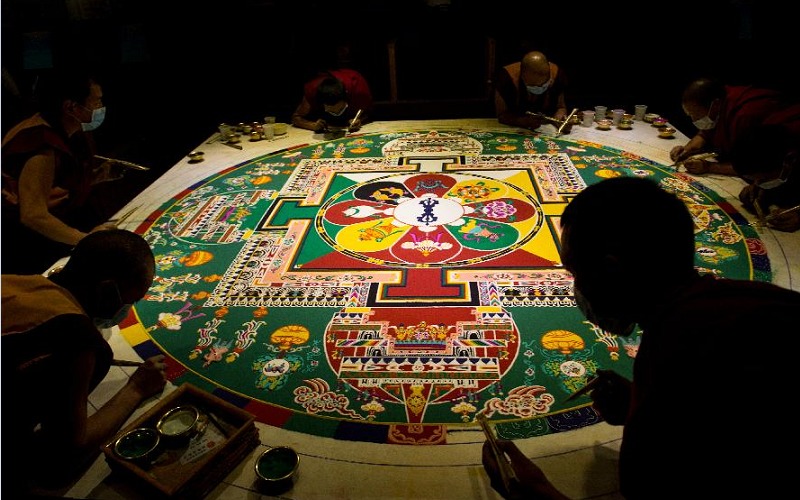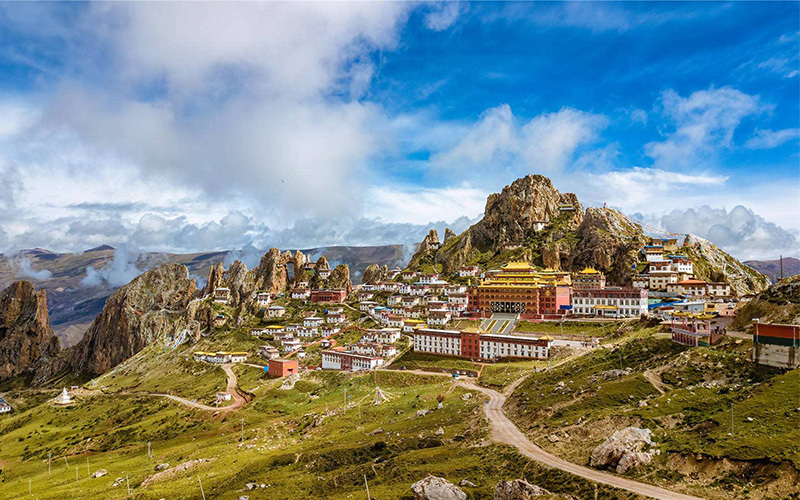Bon - The Indigenous Religion of Tibet
- by Beatrice
- Last Updated: 2024-09-28
Situated high up in the Himalayas, Tibet has long been isolated due to its unique geological barriers. Throughout its unique historical evolution, its Indigenous people were able to develop a unique form of religion known as "Bonism". Usually, it's called for short "Bon."
Bon originated from the "Gangdise Mountains" and " Manasarovar Lake" areas, which belong to the ancient Xiangxiong Kingdom. That mysterious Kingdom has a long and splendid history and culture, which is listed as a World Cultural Heritage now. From the perspective of Tibetan history, "Xiangxiong" is almost synonymous with the entire western part of ancient Tibet. The ancient Xiangxiong civilization is the origin of Tibetan civilization. It's no exaggeration to say, that to understand Tibetan civilization, we must first understand the Xiangxiong civilization; to study Tibetan Buddhism, we must first study this Bon religion.
The well-known Mt. Kailash kora, circumambulating holy Lakes, kowtow, scattering Longda, hanging prayer flags, mani stones, butter sculptures, vajra knots, Tibetan writing, Gzi Beads, Tibetan Guozhuang dance, Thangka paintings, etc. are all derived from the ancient Xiangxiong culture. The ancient Xiangxiong had a tremendous impact on later generations of culture and religion. So now, you can still find traces of Xiangxiong from the culture, arts, religion, and other fields around the world, and it's also where Bon is from.

There are basically two phases in the development of Bon: one is the pre-Buddhism phase, and the other one is the post-Buddhism influence. The first phase refers to the unadulterated form of Bon before the inroads of Buddhist influences. The second phase started in the 8th century when Buddhism started to reach Tibet, and later, alongside the very revival of Buddhism in Tibet. At present, around 10 percent of Tibetans subscribe or follow Bon.
Bon and Its Deities
Bon, as a Tibetan indigenous religion, was created by Tönpa Shenrab Miwoche. It holds the belief in various divine presences of deities, and these deities are traditionally incorporated into the designing and construction of the Tibetan houses, making each Tibetan house a veritable castle (dzongka) protected against the evil forces of the outside world. For this reason, an average Tibetan house usually has seats ascribed to the male god that protects their houses. Every day each father or the man of the house would invoke this god and eventually would burn juniper leaves and wood to placate this god. The woman of the household also has a protecting deity (phuk-lha) whose seat is situated in the kitchen. Moreover, there are many sets of deities and there are many practices that are unique to Bon religion.

The Evolution of Bon under the Influence of Buddhism
In the 8th Century, Buddhism slowly came into Tibet, and its influence eventually caused struggles between the powerful nobles and the ruling house of Tibet. Prodded by these struggles and the need to have a scripture of its own, Bon started to evolve into a distinctly systematized religion with well-written sacred scripture and well-laid doctrines. Throughout these struggles, Bon did not gain religious supremacy over Buddhism because of the late 8th-century persecution of the Bon religion and its followers by King Khrison Detsen. Despite this persecution, however, Bon—as an indigenous religion—and its practices persisted in the eastern and northern frontiers of Tibet.

Bon and Buddhism
There are essential differences between the original Bon religion and the original Buddhism: the Bon religion believes in everything and Buddhism believes in Buddha. Bon religion is an original native religion in Tibet, which is influenced by Buddhism from India. Both Bon and Buddhism learned from each other and generally formed the current Tibetan Buddhism. Tibetan Buddhism is neither Hinayana Buddhism nor Mahayana Buddhism. Instead, it is an independent genre. Songtsan Gambo spread Buddhism in Tibet and made it replace Bon in the mid-sixth century. Later, even Bon believers found some disadvantages of its religion, and they began to emulate something from Buddhism.
Bon at Present
As mentioned above, a sizeable number of indigenous Tibetans (around 10%) still subscribe to the religious practices and beliefs of the Bon religion based on the most recent Chinese census. In fact, before the liberation of Tibet by the People's Republic of China, there were still 300 Bon monasteries throughout Tibet and western China. At present, there are around 264 active Bon convents, monasteries, and hermitages throughout Tibet including the most famous ones such as Zelzhol Monastery in Qamdo, Yungdrung Ling Monastery in Shigatse, etc.
Moreover, a number of Bon monasteries and establishments also exist in Nepal such as Triten Norbutse on the western outskirts of the city of Kathmandu. Furthermore, Bon’s leading monastery (Menri Monastery) is refounded in Dolanji, Himachal Pradesh, India. Lastly, at present, Bon is already officially recognized as a religious group with equal rights as the Buddhist schools, and discrimination against “Bonpos” is forbidden and is considered self-defeating and undemocratic.
Related Articles
- Tangra Yumco
- Zelzhol Monastery
- Lake Manasarovar
- Gangdise Mountains
- Ngari Travel Guide
- Lhanag-tso
- Sepu Kangri
- Tibet Religion
- Chiu Monastery
- Manasarovar Guesthouse
Email response within 0.5~24 hours.


